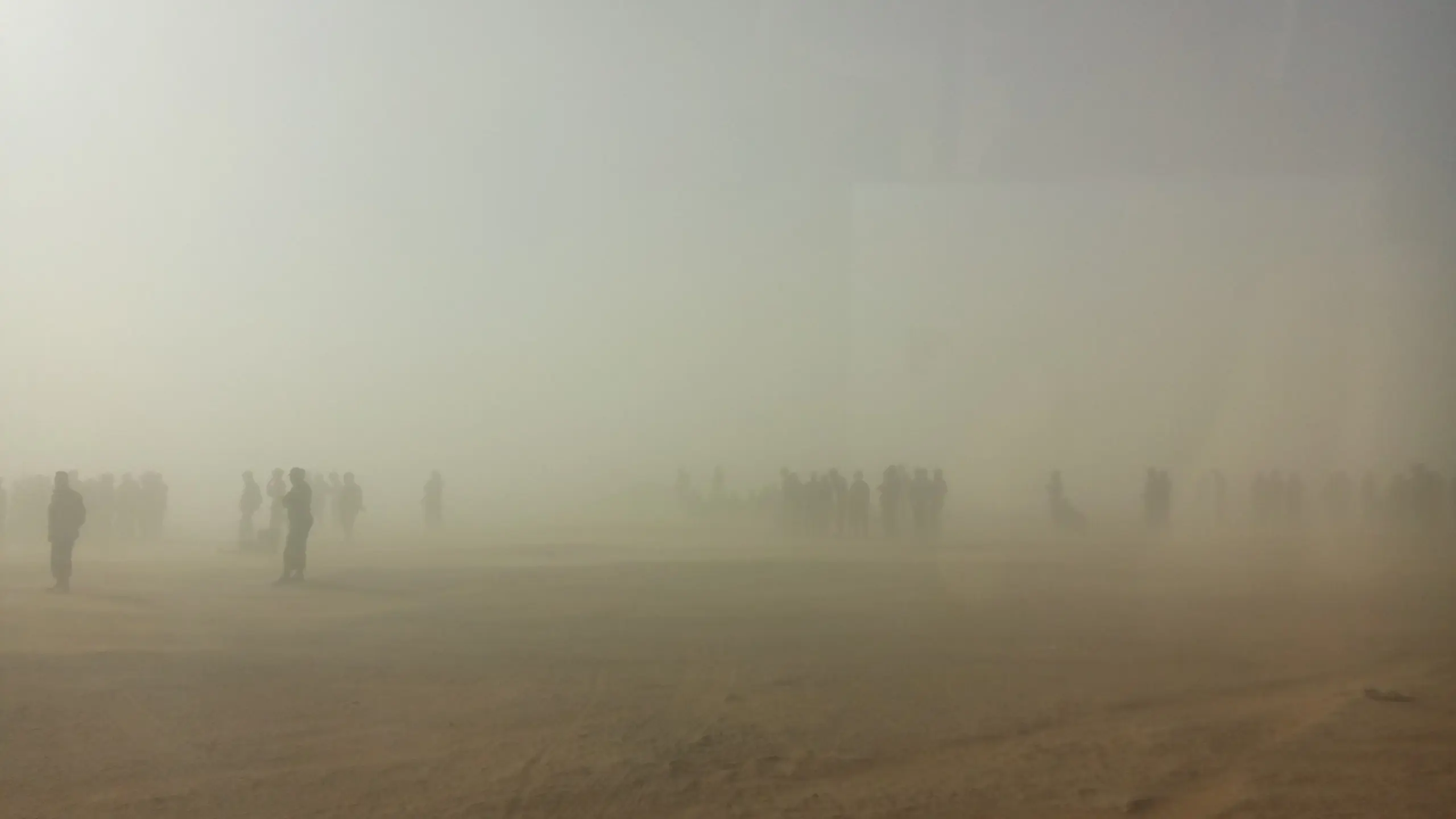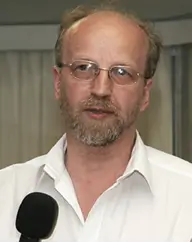Sand and dust Storms (SDS) usually occur when strong winds lift large amounts of sand and dust from bare, dry soils into the atmosphere, transporting them hundreds to thousands of kilometres away. They are a natural event linked with land and water management, as well as climate change.
Strong pressure gradients associated with cyclones or thunderstorms increase wind speeds over a wide area, which lift a large amount of sand and dust into the atmosphere and transport it, potentially for long distances. The main sources of mineral dusts are the arid regions of Northern Africa, the Arabian Peninsula, Central Asia and China, however other regions such as North and South America, Australia and South Africa also add to the mineral dust in the atmosphere.
The importance of researching atmospheric dust
SDS play a significant role in different aspects of weather, climate and atmospheric chemistry and represent a serious hazard for life, health, property, environment, and economy. Global estimates of dust emissions, vary between one and three Gigatons per year.
Mineral dust contains iron and phosphorus, which are nutrients for both continental and maritime ecosystems.
There are a number of problems associated with airborne dust, such as how it creates greenhouse effect conditions. It does this by absorbing and scattering solar radiation that is entering Earth’s atmosphere, which reduces how much reaches the earth’s surface, as well as stopping long-wave radiation from leaving. Dust particles also impact weather, acting as condensation nuclei for warm cloud formation and ice nuclei agents for cold cloud generation.
Airborne dust poses a risk to people and human activity, such as danger to air transport and negative consequences for the agricultural sector.
About human health dust can cause skin and eye irritations, as well as more seriously; respiratory conditions such as pneumonia, and asthma. Very fine particles of dust may even penetrate the lower respiratory tract and enter the bloodstream. Dust can also carry large amount of bacteria which favours the transmission of diseases.
An international network to encourage the use of monitoring and forecasting dust products
In November 2017, a new COST Action launched called ‘International Network to Encourage the Use of Monitoring and Forecasting Dust Products or inDust for short. The Action’s overall objective was to establish a network involving research institutions, service providers and potential end users of information on airborne dust that could assist the diverse socio-economic sectors affected by the presence of high concentrations of airborne mineral dust.
The Action also aimed to:
- Identify and exploit dust forecast products
- Coordinate current R&D activities and enhance the availability of appropriate products to help socio-economic sectors affected by the presence of airborne mineral dust
- Build capacity through high-level teaching of end-users to promote the use of delivered products
- Train technical staff to properly use the available observational and forecast products to design and implement preparedness and mitigation measures
- Enhance cooperation with institutions from Northern Africa and the Middle East to work together on climate change science and mitigation/adaption strategies.
Researching airborne dust from across the world
The Barcelona Supercomputing Centre (BSC) was the Grant Holder of inDust and the Action, which was Chaired by BSC researcher, Dr Sara Basart.
The network – researcher focus:
Involvement spanned across the world
The Action gained global involvement, with researchers from 29 COST countries, 9 Near Neighbour Countries (NNCs) and 13 International Partner Countries (IPCs). More information on NNCs and IPCs can be found here
There were also 3 international organisations involved, WMO, WHO, and ECMWF:
The World Meteorological Organisation (WMO)
The World Health Organisation (WHO)
The European Centre for Medium Range Weather Forecasts (ECMWF)
Researcher focus:
Outcomes
Over the four years that the Action ran, the network was phenomenally active holding events, training schools and even a children’s art competition.
One of the final outcomes for inDust was the creation of a pop-up book ‘The impacts of sand and dust storms’ (printed and interactive) and a related animated video presenting the impacts of sand and dust storms on transport and infrastructures, agriculture and energy, health and air quality, and the Earth System.
Watch below is the animated video ‘The impacts of sand and dust storms’:
The Action finished in 2021, with the final event being held online due to COVID.
Researcher focus:
Further information
Visit the inDust network web page
Visit the inDust Action page on our website
Attributions
- Banner videos – Videezy
- Banner photo – Loïc Alejandro, Pexels







